#cynipid
Explore tagged Tumblr posts
Text
incredible photos!! i just learned about this in the book im reading! it's called "the nature of oaks" by doug tallamy. highly recommend.
galls are generally formed as follows:
a gall wasp (family cynipid) injects an egg and growth-inducing chemicals into the bud of an oak or other tree. this induces the gall, a growth that forms around the egg. gall shape varies depending on the species of wasp
cynipid larvae hatches within the gall. the gall provides it food and protects it from predators
well... not all predators. a parasitoid wasp may come along! a parasitoid wasp will attempt to oviposit her egg right through the gall and into the cynipid larvae.
if the parasitoid's ovipositor is long enough to successfully reach the cynipid larvae inside, her larvae will hatch and slowly eat the cynipid larvae 🙃😬
fortunately for the cynipid, different galls have different adaptations that reduce the risk of predation -- i.e. some are larger so the parasitoids ovipositor cant reach. others have multiple chambers inside. some even have long hairs or sticky substances on the outside to make it difficult for the parasitoid wasp, etc etc
here are a couple pictures of oak galls from wikimedia commons:
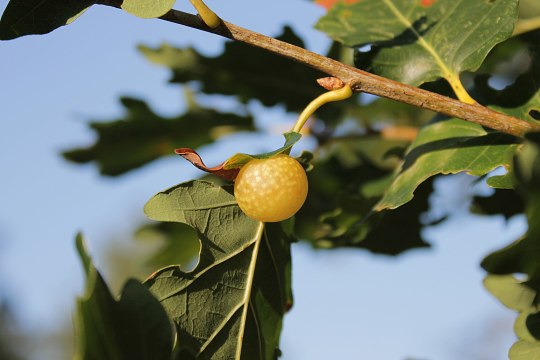
by Andou via Wikimedia Commons
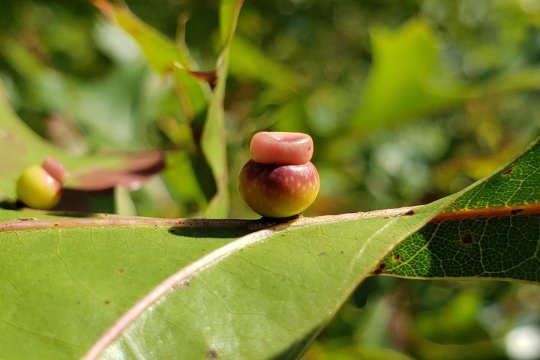
by CriticalDrinking via Wikimedia Commons
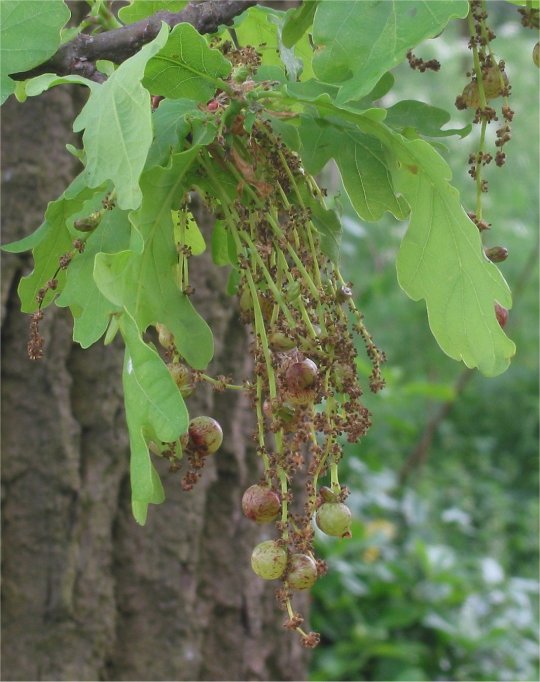
by Rasbak via Wikimedia Commons


Genus Torymus ovipositing a gall from the Genus Amphibolips
227 notes
·
View notes
Text

Attack #20, featuring BASILQUOTES' Deborah!
6 notes
·
View notes
Note
can i use ther internet to play with women sexually? and be a woman
ummmmm idk sorry but you can use it to read about gall wasps
17 notes
·
View notes
Text
WASP REVIEW - WASPMON, FUNBEEMON, AND CANNONBEEMON (DIGIMON)
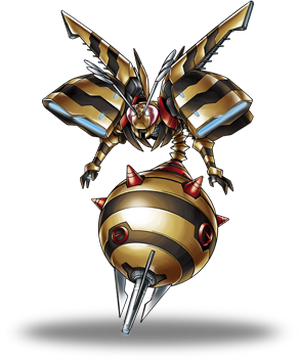
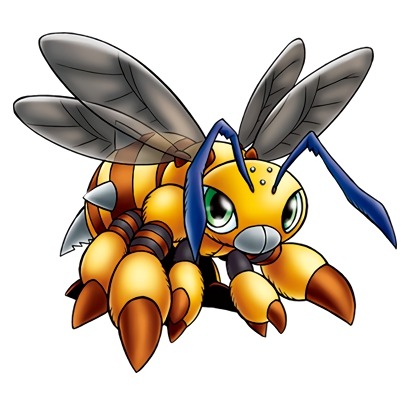
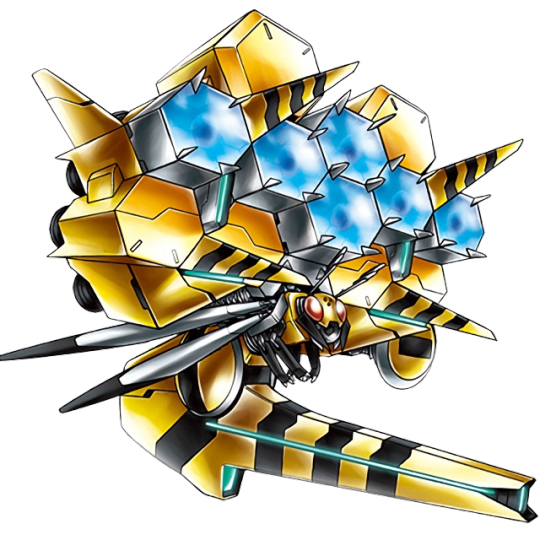
[Image IDs: Three official renders of the listed Digimon, those being Waspmon, FunBeemon, and CannonBeemon /End IDs.]
Well, this will be interesting as someone whose only experience with the Digimon franchise is whatever Karina from Drawfee has explained about the franchise. But I'm gonna try my best to understand what we've got going on here, which shouldn't be too difficult! Let's just hop into the deep end here! (Apologies in advance to the Digimon enjoyers)
Starting with Waspmon, this Digimon is very clearly at least mostly mechanical, which I suppose makes my job here a little bit easier, as it's clear they were not going for accuracy. Even still, I do have to point out some things. It seemingly only has one pair of improperly segmented legs (unless those rib-like parts around its mesosoma are legs too), with more human-like hands, and these big armored shoulder plates (supposedly propellers?) that are perhaps only comparable to the large tibiae of shield-handed wasps. They also seem to have only one set of wings but I can't say for sure. The head seems accurate enough, with even the right number of eyes, in the right positions! That's pretty rare! The antennae are a bit too straight, not segmented enough, with feathered ends I've never really seen in a wasp, although they do remind me of some notably different featherings on certain species, such as a number of members of the genus Dendrocerus. There are other things I could point out, like the abdominal spines and laser stinger, but given its mechanical nature, I'll leave it at the fact that the abdomen is too big, with perhaps the closest example I can give in relation to the roundness of the gaster being that of gall wasps!
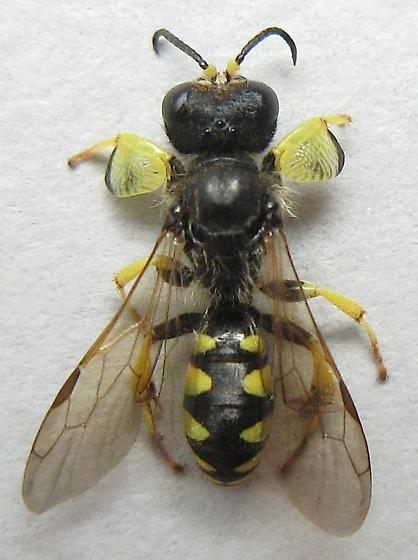
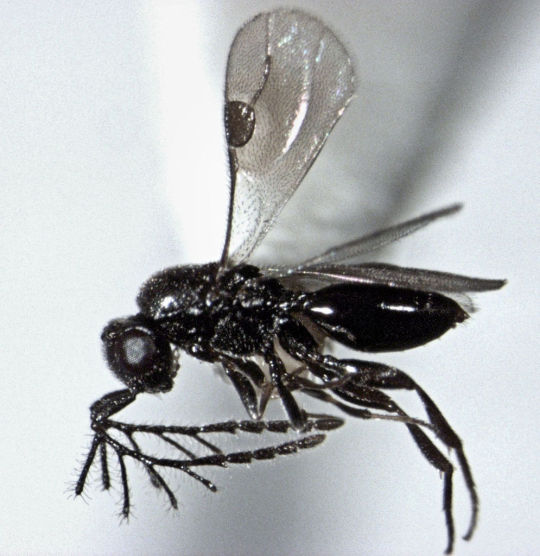
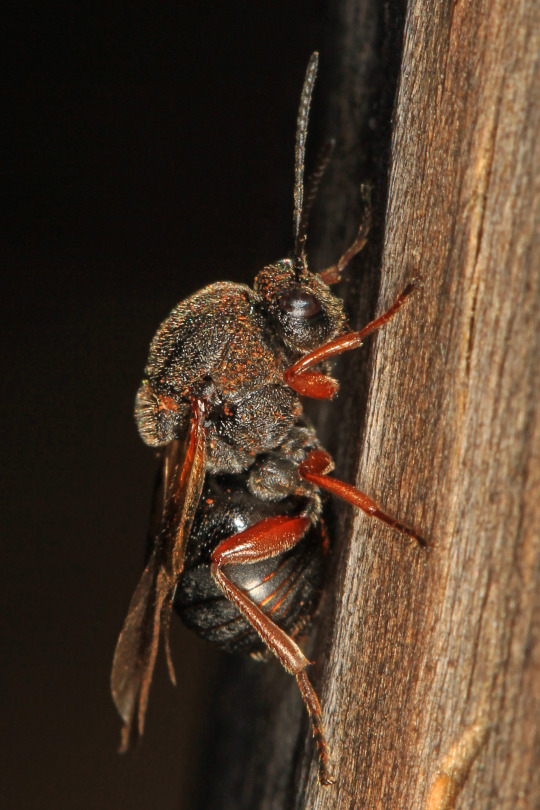
[Image Sources: bugguide.net, Jim Moore, Wikimedia Commons, S.E. Thorpe, and Flickr, Judy Gallagher | Image IDs: Three photos, one of a black and yellow shield-handed wasp on a white surface, the next of a black specimen of the genus Dendrocerus in front of a white background, the last one of a black and red Cynipid gall wasp on a brown wooden surface /End IDs.]
As for FunBeemon, this one seems a lot more natural on nature, with a very clear inspiration too. Body's properly segmented, the color could stand to be a tiny bit darker though. The correct number of wings, legs, and eyes. But the eyes that are supposed to be compound are these glassy, mammalian eyes, and the legs aren't quite colored or segmented right, with too few claws on most legs as well. The antennae seem to be segmented properly though! Even with little lines that seem to imply the presence of the flagellomeres, not quite clear on that though. The mandibles shouldn't be grey like that, and the head in general is a bit too wide and round. It has the same strange abdominal spines as Waspmon, which shouldn't be there, as I don't believe any species of bee has those. But they did get the "serrated" (barbed) stinger right, even if it is far too thick!
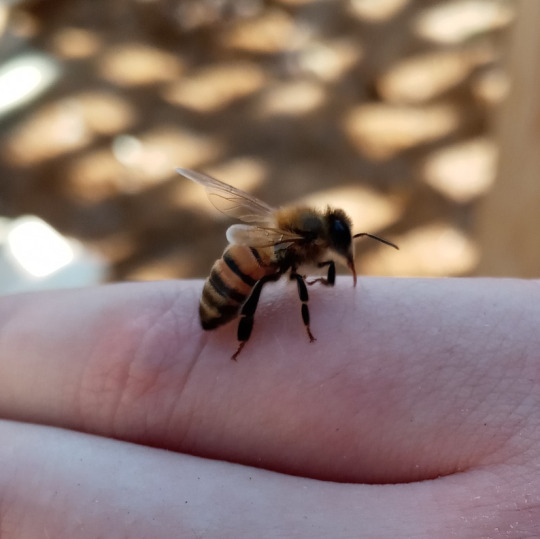
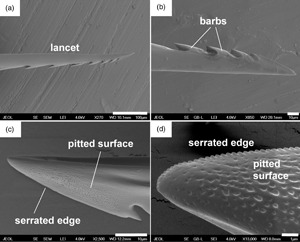
[Image Sources: Jupiter's Wasp House, ie Myself, and Cambridge University | Image IDs: A photo of a black and yellow honey bee on a human hand, followed by four images of a honey bee's stinger viewed on an extremely close up scale /End IDs.]
Finally, when it comes to CannonBeemon... What's going on here? Don't get me wrong here, it's awesome, but it does also look like Polistes dominula got freaky with a FusionFall Shattergun. All bits aside, this Digimon does fall into essentially the same category as Waspmon, it's too mechanical to really bother with the details, this one even moreso. Everything I said about Waspmon's general head area still applies. It has the right wing count, though they are thin for something as heavy as this thing has to be (the Wiki says 38g but I'm not sure about that for something so big and metallic, not gonna lie). It has only four, very short legs, with little grabby hands at the end, which while incorrect is actually pretty cute. The shape is too abnormal to compare to any real wasp, though I do quite like the use of hexagonal cell shapes here in reference to real social bees' and wasps' hive structures. That's about it for that, though.
Now, what about their behaviors? Well, as one might expect, Waspmon is the defensive soldier type, patrolling the viscinity of the hive, being aggressive enough to divebomb Digimon that get too close. Now, I won't deny that wasps do divebomb as an offensive move against potential hive invaders, but they act on far more than distance to the hive, their reaction to an individual's presence is based on a multitude of factors, such as movement/body language, their level of familiarity with the threat, and of course, actual actions taken by the potential threat to harm the hive, among other things. That said, these Digimon do seem to be quite intelligent, as the wiki states "The antenna-parts on its head have high reconnaissance ability", IE they are able to gather information essentially at the level of a special operative. A real wasp can remember quite a lot, though it definitely takes in more than just what it can detect through smell.
CannonBeemon is also a line of defense for the hive, though being much more powerful, both of these Digimon use lasers instead of venom, as you could've probably guessed from their mechanical structures, which is, of course, not true for actual wasps. I'm sure I don't have to tell you that wasps don't fire lasers though. Whether or not these two soldiers hunt for or feed on anything is unclear.
As for FunBeemon, it also doesn't seem to be out gathering food either, but it does gather some materials, those being bits of "home data", to build up the hive the same way many social Hymenopterans would gather wood, dirt, or the material needed to make wax. This Digimon gets along well with plant Digimon, which should probably be the case for all the rest of them too but whatever. These ones, too, also attack... With projectiles, they fire off their stingers like arrows. This is a surprisingly common thing amongst representations of stinging Hymenopterans in media? strange... They also have a second ability to summon allies, which is unfortunately, for whatever reason, referred to as "88 Call". Apparently this is because 8 in Japanese can be read as "Hachi", which is also a word that refers to eusocial Hymenopterans, like honey bees, but of course, two eights can also be read in a far, far worse way. Different potential connotations aside, the description of this move says that FunBeemon summons allies with its antennae, which, as far as I know, the alarm pheromones of bees are not produced in or near the antennae.
Back to the material gathering and building of the hive though! It turns out that FunBeemon isn't the only one who helps to build the hive, as it's aided by-
HERE COMES A NEW CHALLENGER! - FORGEBEEMON
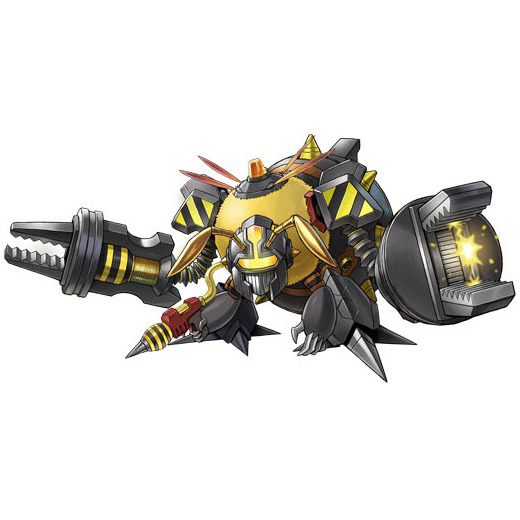
[Image ID: The official render of ForgeBeemon /End IDs.]
This guy! Not much to say here in terms of accuracy, as I don't think they're really trying for that here. But I do really love that they accounted for its ocelli in the mask design! Coulda used a bit more space around the compound eyes though. It's got antennae, which aren't segmented right, but they're present, and bend in the right place. It also has wings that are even tinier than CannonBeemon! Its two moves are also defense by way of offense, with a saw-like stinger, and two extra robotic arms that can produce a powerful electric discharge.
It's not called a "Forge" for nothing, either, as these bees are the ones that take materials and bond them together with an adhesive called "Honey Glue" (Don't think that's how that works, but oh well) that's produced in its abdomen, much like how honey bees produce wax!
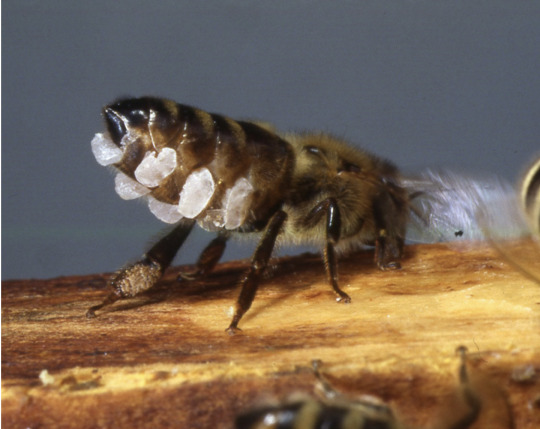
[Image Source: Hive And Honey Apiary | Image ID: A photo of a black and yellow honey bee producing wax from its abdominal glands /End IDs.]
But, if they have a hive, and live in the same eusocial manner as some real honey bees and vespid wasps, then they must have a Queen! I wonder what it looks like-
HERE COMES A NEW CHALLENGER! - QUEENBEEMON
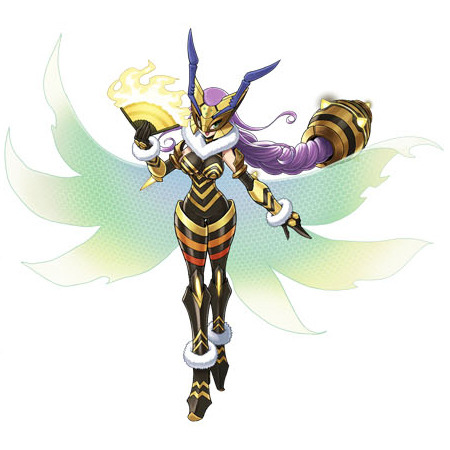
[Image ID: The official render of QueenBeemon /End IDs.]
... That's just a human woman in a costume... Are y'all sure this is a Digimon?... Well, I mean, it still has absolute power over the hive, so I guess yeah, that's their queen, but... Huh.
Well QueenBeemon gets a badass army and a badass mech chair with venom shot arms and laser turrets at least. Surely that's the end of them and that's all that needs to be s-
HERE COMES A- OK JUST GET IT OVER WITH - VESPAMON AND TIGER VESPAMON
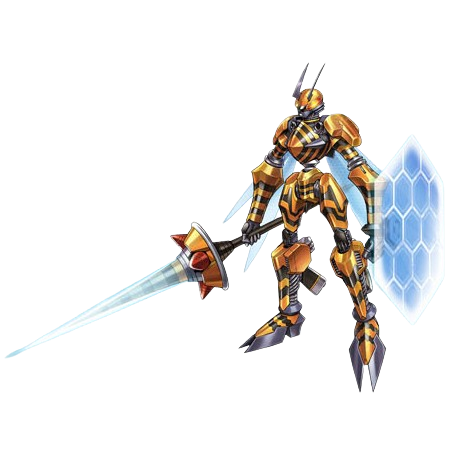

[Image IDs: The official renders of Vespamon and Tiger Vespamon /End IDs.]
Alright, more guys in suits. Human status is less clear given the fact they have no skin showing, but they're definitely humanoid... I can at least comment on the fact they seem to be designed to be male, which, if they're meant to be soldiers/workers too (Where are the drones??) that wouldn't be the case, as the vast majority of male social wasps (including bees) do not have defensive capabilities and don't leave the hive nearly as often as the females.
But that HAS to be it? Right? RIGH-
OH COME ON - HONEYBEEMON, FLYBEEMON, JEWELBEEMON, AND DINOBEEMON




[Image IDs: The official renders of HoneyBeemon, FlyBeemon, JewelBeemon, and DinoBeemon /End IDs.]
... I'm not even gonna bother.
-
WaspBeemon and FunBeemon (Ranked on accuracy): 6.5/10
CannonBeemon and ForgeBeemon (Accuracy not considered, ranked on design): 5/10 - 6/10
Everyone Else: [DISQUALIFIED]
-
Leave your wasp review suggestion in the replies, tags, or askbox!
24 notes
·
View notes
Text
A bunch of Diplolepis rosae embedded in a tiny pincushion. One of the common names for this wasp is Robin's pincushion gall wasp, but then my brain went off on a tangent, and I just imagined a bunch of Cynipids sticking out of an actual pincushion from their ovipositors. Don't mind me.... 😅
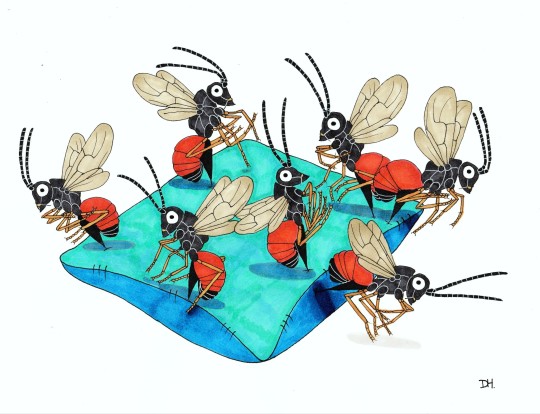
#hymenoptera#insect#entomology#wasp#wasps#apocrita#cartoon#comic#parasitica#Cynipidae#Diplolepisrosae#pincushion#silly#RobinsPincushionGallWasp#GallWasp
38 notes
·
View notes
Text
Les guêpes gallicoles ont généralement des glandes à venin de grande taille par rapport à leur corps, ce qui suggère que leur venin joue un rôle clé dans la formation des galles végétales
See on Scoop.it - EntomoNews
Wasps that generate plant growths called galls commonly have large venom glands relative to body size, suggesting a key role for venom in gall formation.
Gall-Inducing Wasps Have Enlarged Venom Glands, Study Finds
By John P. Roche, Ph.D.
01.12.2023
-------
NDÉ
Traduction
Les guêpes qui produisent des galles ont des glandes à venin hypertrophiées, d'après une étude Une nouvelle étude révèle que les guêpes qui produisent des excroissances végétales parasites appelées galles ont généralement des glandes à venin de grande taille par rapport à leur corps, ce qui suggère que leur venin joue un rôle clé dans la formation des galles végétales.
[Image] Une femelle de guêpe gallicole pond des œufs dans la nervure centrale d'une feuille de chêne rouge. Les guêpes de la famille des Cynipidae utilisent des composés pour stimuler la croissance d'excroissances protectrices, appelées galles, dans lesquelles leurs petits peuvent se nourrir et grandir dans une enceinte protectrice. Dans une nouvelle étude sur les guêpes à galles réalisée par des chercheurs de la Penn State University, les chercheurs ont examiné l'anatomie des espèces de cynipides et ont découvert que les guêpes inductrices de galles ont des glandes à venin particulièrement grandes, ce qui implique le venin dans l'induction des galles. (Photo d'Antoine Guiguet, Ph.D.)
L'étude
Comparative anatomy of venom glands suggests a role of maternal secretions in gall induction by cynipid wasps (Hymenoptera: Cynipidae) | Insect Systematics and Diversity | 13.10.2023 https://academic.oup.com/isd/article/7/5/3/7310975?login=false
0 notes
Photo
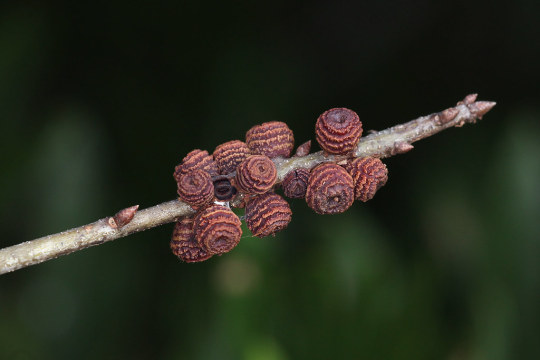
cynipid wasp galls by myriorama https://flic.kr/p/2nJZvBV
3 notes
·
View notes
Photo
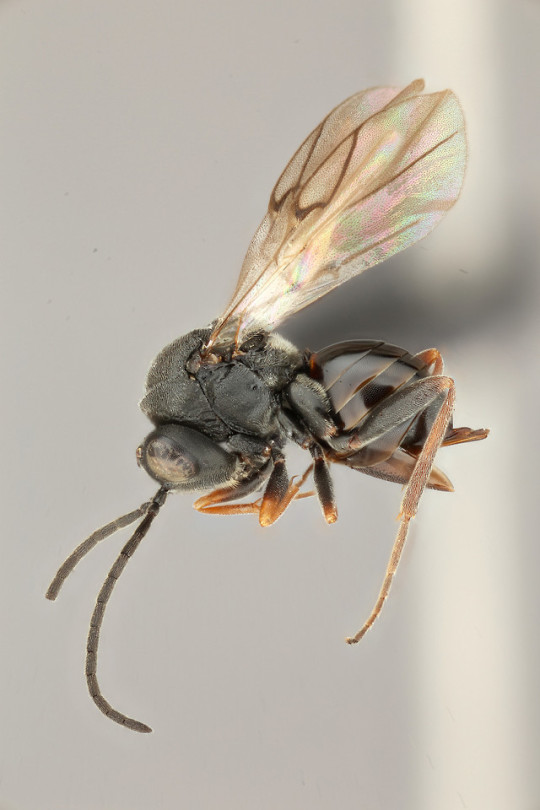
This is picture 9 from a 12 picture invited series by Matt Buffington ([email protected]) at the USDA Parastitic Hymentoptera group using specimens from the U.S. Natural History Museum Smithsonian. Matt uses a system very similar to ours to photograph and stack this super tiny wasp. Looking for the missing link between gall wasps and other cynipoids? Look no further than Parnips nigripes! This wasp parasitizes Barbotinia gall wasps that gall Papaver in the Mediterranean; how's that for being super-specific? Well, this wasp also has many morphological features of gall wasps, so we consider this species to 'bridge' the entomophagous figitid wasps with the phytophagous cynipid wasps!
48 notes
·
View notes
Text
Oak galls: currants and spangles
Oak galls: currants and spangles
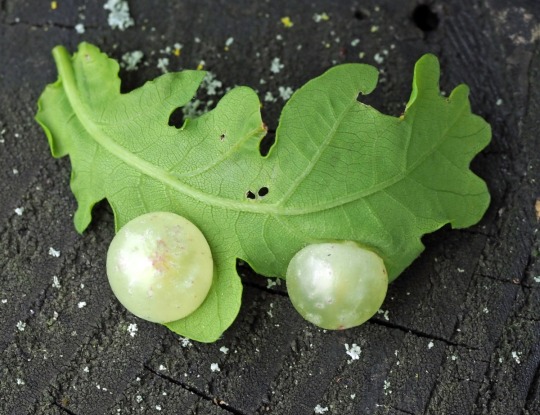
View On WordPress
#currant gall#cynipid wasp#cynipidae#Cynipini#Neuroterus quercusbaccarum#Oak gall wasps#oak galls#spangle galls
0 notes
Photo
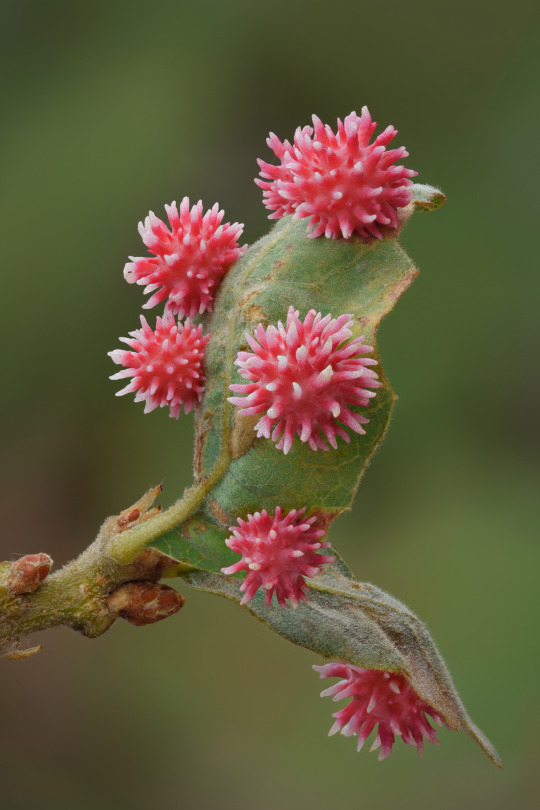
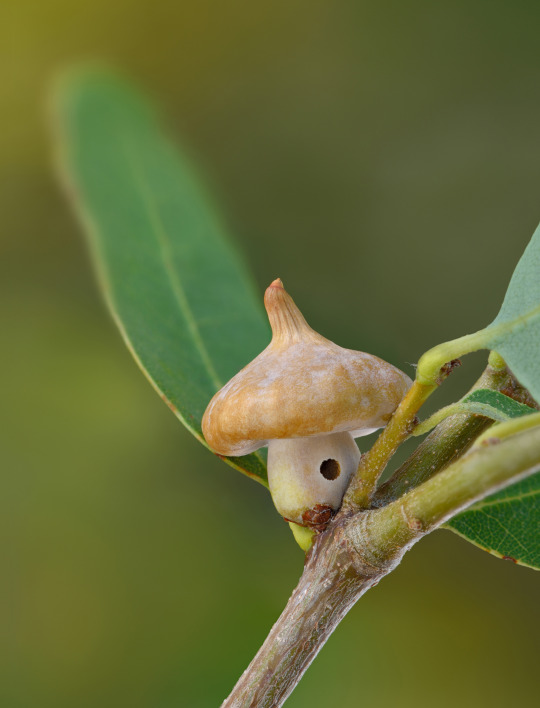
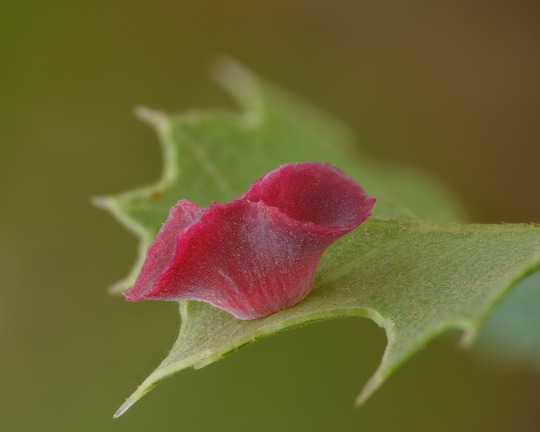
Macro Photos Spotlight the Colorful, Whimsical Plant Growths Caused by Cynipid Wasps
1K notes
·
View notes
Note
Hello... ! I'm really into cynipid wasps and their galls recently, do you think you could post some?
It’s oftentimes very difficult to find good photos of adult gall wasps! But...I will see what I can find, and if I can’t find adults, I could at least post an array of interesting galls. I’ll do that soon. :)
22 notes
·
View notes
Photo
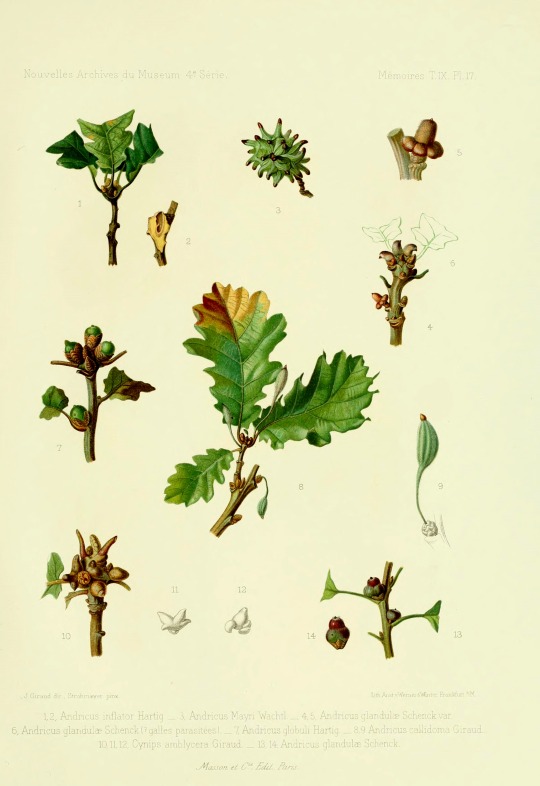
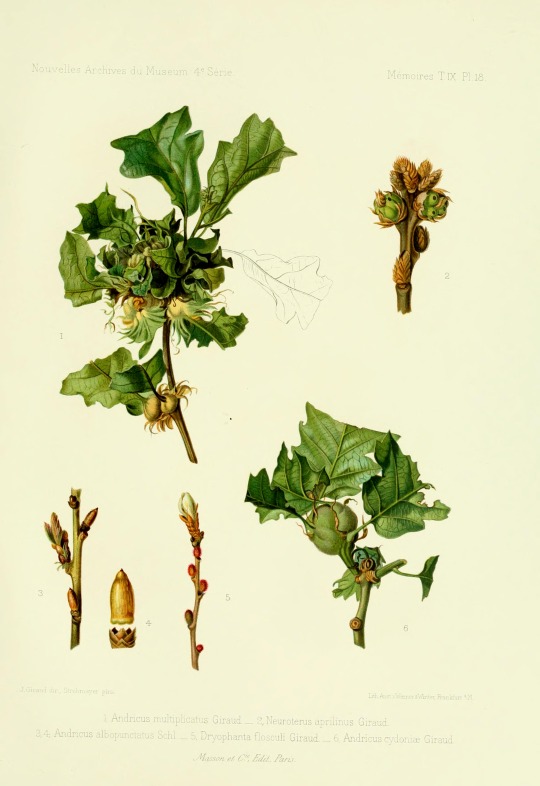
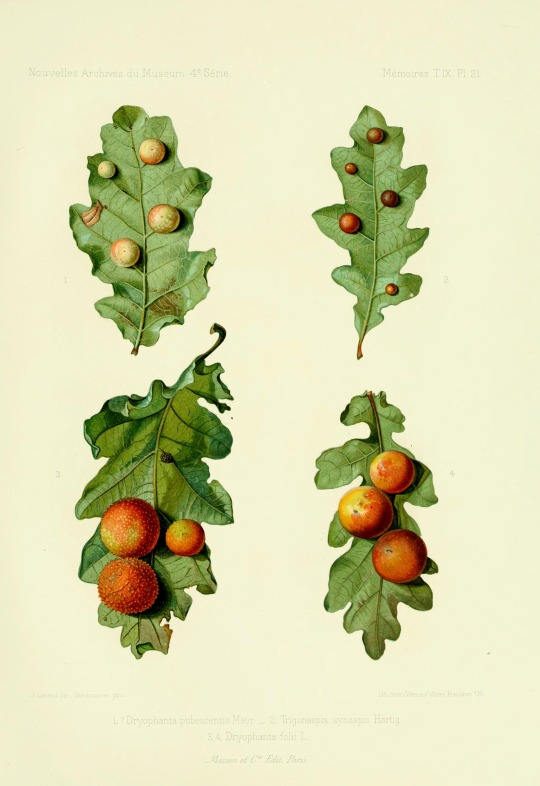
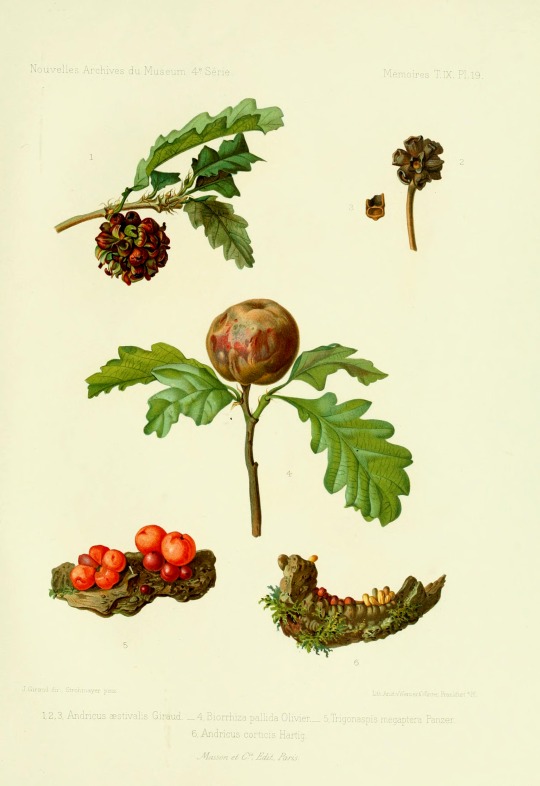
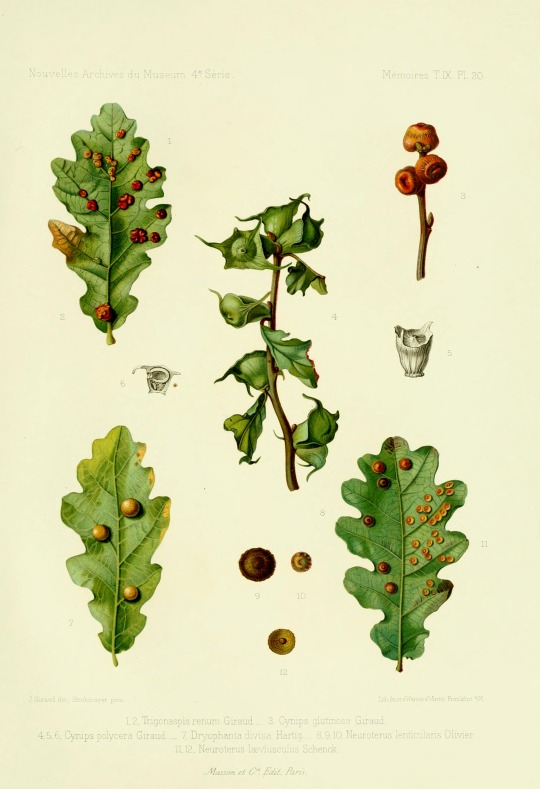
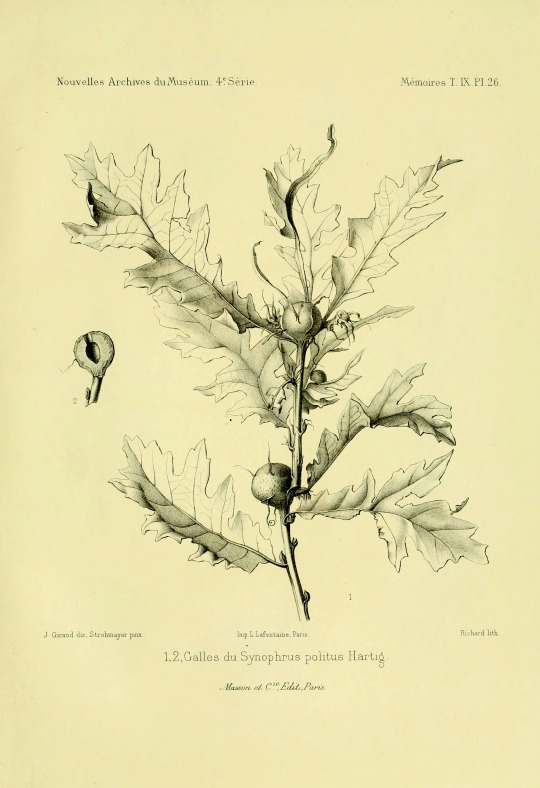
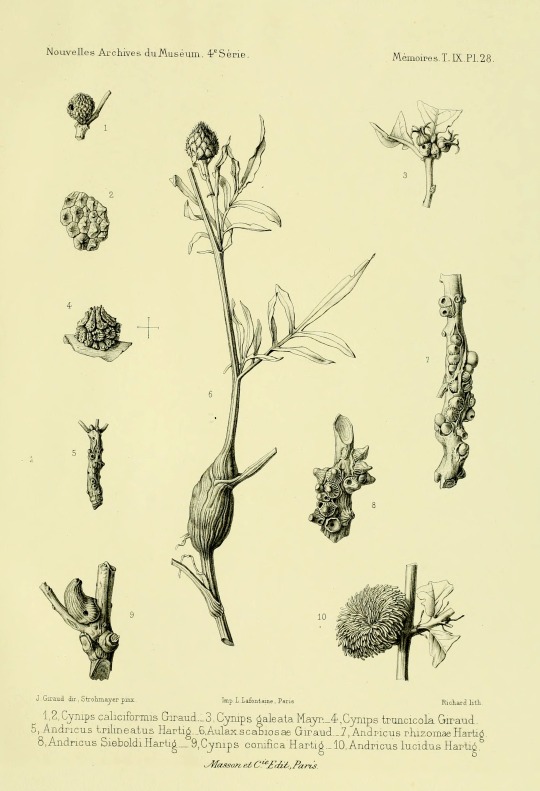
Wales Cynipides
collection of original tricks performed under the direction of the late Dr. Jules Giraud with text by G. Darboux and C. Houard.
Publication info Paris: VA, USA, 1907. BHL Collections: Smithsonian Libraries
#scientific illustration#entomology#galls#cynipides#insects#Botanical illustration#botany#wales#oak#natural history#illustrations
100 notes
·
View notes
Text
0878-8575-5072 || Harga Jual Grosir Manjakani, Majakanza Herbal Clinic
Manfaat Minum Majakani, Manfaat Obat Manjakani, Manfaat Majakani Perapat, Manfaat Majakani Perapat Wanita, Manfaat Majakani Pasrapat, Manfaat Pil Manjakani

MENGENAL MANJAKANI MAJAKANZA
Sekilas tentang buah Manjakani / Majakani…!
Buah manjakani / majakani berasal dari pohon manjakani atau dikenal pohon oak,
memiliki berbagai nama oak galis , mecca majakani , majakani , Quercus Infectoria atau
Quercus Lusitanica atau di India dikenal dengan nama Majufal.
Proses pembentukannya diawali oleh Tawon Gall atau Cynipid menggunakan daun
manjakani sebagai tempat bertelur yang membuat tanaman merespon larva tawon
meyebabkan reaksi biokimia antara jaringan tanaman dan larva tawon, proses ini
membentuk jaringan abnormal berbentuk bulat dan keras yang diproduksi dan ini lah
yang disebut buah manjakani / majakani.
Mengapa Manjakani / Majakani…?
Manjakani / majakani sejak dahulu sudah terkenal bermanfaat sebagai jamu herbal
penunjang kesehatan organ kewanitaan Anda. Kenapa buah ini sangat bermanfaat bagi
kesehatan organ intim wanita? Itu karena buah ini memiliki kandungan yang sangat
baik bagi kesehatan organ intim, seperti antioksidan, beberapa Vitamin ( seperti Vitamin
A dan C), kalsium, besi, serat, protein, dan karbohidrat.
Buah majakani merupakan buah yang berasal dari Indonesia yang dipercaya memiliki
manfaat untuk menjaga kesehatan organ intim kewanitaan, seperti mengatasi
keputihan, gatal-gatal pada organ kewanitaa dan lainnya . Selain itu, buah ini juga
memiliki banyak khasiat yang sangatlah dipercaya apabila dikonsumsi oleh wanita.
Kandungan yang baik yang ada pada buah inilah yang membuatnya kaya akan manfaat
dan khasiat.
Majakani MAJAKANZA merupakan ramuan herbal (jamu) asli dari Aceh, dengan bahan
buah manjakani / majakani , kunyit putih, rumput Fatimah, dll yang terbukti berkhasiat
untuk mengatasi masalah organ kewanitaan serta mengobati berbagai penyakit
kewanitaan seperti keputihan, miom dan kista.
Manjakani Majakanza terdiri dari bahan baku herbal pilihan berkualitas untuk
memelihara organ kewanitaan anda , bahan unggulan Manjakani / Majakani (Quercus
Infectoria) seperti dijelaskan sebelumnya merupakan buah yang banyak sekali manfaat
/ khasiatnya. Di China, Malaysia, Arab, India, Brunei, Iran dan tentu saja di Indonesia,
manjakani / majakani dipakai untuk bahan obat herbal kewanitaan.
Mengapa Manjakani / majakani MAJAKANZA…?
manjakani / majakani MAJAKANZA diharapkan menjadi pilihan tepat para wanita yang
menginginkan terjaga organ kewanitaannya. Produk manjakani /
majakani MAJAKANZA telah mendapat ijin resmi dari Badan Pengawas Obat-obatan
dan Makanan (BPOM) dan juga sertifikasi Halal dari Majelis Ulama Indonesia dan
telah menjadi favorit wanita tidak hanya di Indonesia tetapi di manca negara.
Harga jual grosir Manjakani / Majakani MAJAKANZA tergolong murah jika dilihat dari
manfaat / kegunaan / khasiatnya untuk membantu permasalahan organ kewanitaan dan
keharmonisan rumah tangga serta mengobati berbagai macam penyakit. Kami jual
grosir manjakani / majakaniMAJAKANZA dengan harga murah agar lebih terjangkau.
MANFAAT MAJAKANZA
MENJAGA kebersihan organ intim wajib dilakukan, tidak terkecuali pria atau wanita.
Khusus wanita, selain menjaga kebersihan organ intim, wanita juga wajib mengetahui
penyebab dan gejala pada penyakit-penyakit kelamin yang tidak biasa diketahui.
Begitu banyak faktor yang menyebabkan terjadinya penyakit pada kelamin. Selain
jamur, bakteri dan parasit yang menjadi penyebab utama terjadinya infkesi pada
kelamin juga bisa terjadi akibat pencuci khusus organ intim yang tidak menutup
kemungkinan mengakibatkan penyakit.Maka kami rekomendasikan pada anda produk
MAJAKANZA.
Berikut adalah manfaat dari MAJAKANZA
1. Majakani Kanza (Majakanza) untuk Penyakit Keputihan
Keputihan yang tidak Normal seperti Keluarnya cairan yang berlebihan pada Organ
intim Wanita, dapat menjadi pertanda bahaya akan adanya berbagai penyakit di
Oragan intim Wanita, oleh karena itu Produk Majakani Kanza (Majakanza) ini dapat
menjadi solusi yang Aman tanpa Efek samping, karena terbuat dari bahan bahan Alami
dan sudah Terbukti khasiatnya.
2. Majakani Kanza (Majakanza) untuk Mengatasi "Rasa Gatal & Bau tak Sedap"
pada Organ Intim Wanita
Pada dasarnya, Keputihan yang Normal.. Keluarnya Cairan berwarna Putih dan agak
lengket dari dalam Vagina adalah untuk menarik Kotoran (bakteri/kuman) keluar dari
dalam Vagina, sehingga Vagina menjadi Bersih (dari penyakit).
Adanya "Rasa Gatal dan Menimbulkan Bau tak Sedap" biasanya disertai keluarnya
cairan berwarna tidak lazim, keadaan seperti ini mengindikasikan akan adanya penyakit
dan dapat membahayakan jika tidak ditangani dengan benar.
3. Majakani Kanza (Majakanza) untuk Membersihkan Kotoran yang Menggangu
pada Organ intim Wanita
Kotoran bukan hanya dapat mengganggu namun dapat membahayakan kesehatan
vagina. Bakteri yang menumpuk jika tidak dibersihkan akan menimbulkan berbagai
macam penyakit di wilayah organ intim yang merupakan area senstif terkena iritasi
serta merta akan menimbulkan Infeksi dsb,
4. Majakani Kanza (Majakanza) untuk Melenturkan Otot Vagina
Kelenturan Otot Vagina di akibatkan beberapa faktor seperti: Umur, Intensitas
Kehamilan (dalam hal ini kelahiran dalam jangka waktu berdekatan) dan berbagai
faktor lainnya yang menyebabkan berkurangnya elastisitas Otot Vagina, hal ini
tentu akan mempengaruhi hubungan suami istri.
5. Majakani Kanza (majakanza) Herbal untuk Pengobatan Penyakit Miom dan
Kista
Miom dapat membahayakan jika terus bertumbuh menjadi besar, adannya Miom di
dinding rahim juga akan memperbesar resiko Keguguran, karena embrio tidak dapat
memempel sempurna pada dinding rahim. ketika kehamilan terus berlanjut akan dapat
menyebabkan terjadinya Pendarahan ssat persalinn (kelahiraanya), begitu pula
dengan Kista yang merupakan Tumor, meskipun terbilang tumor jinak, namun jika di
biarkan tanpa Perawatan yang baik hal ini dapat menggangu kesehatan organ intim
wanita, penyakit Kista juga adalaha salah satu penyebab / faktor "sulitnya
mendapatkan keturunan" (mandul). Produk Herbal Majakani Kanza (majakanza)
adalah merupakan Solusi yang Aman untuk Pencegahan dan Pengobatan untuk
penyakit Miom dan Kista sebagaimana tersebut di atas, tanpa harus operasi.
6. Majakani Kanza (majakanza) Herbal untuk Pencegahan Kanker Serviks
Majakani Kanza (Majakanza) telah dipercaya sebagai Obat Herbal dengan khasiat
yang luar biasa untuk Perawatan, Pengobatan dan Penyembuhan berbagai macam
penyakit Kewanitaan termasuk penyakit yang berbahaya sebagaimana Kanker Serviks
ini.
7. Majakani Kanza (majakanza) Herbal untuk Melancarkan menstruasi
Khasiat lain dari Majakani Kanza (majakanza) ini
adalah Mengatasi siklus Menstruasi yang tidak lancar.
8. Majakani Kanza (majakanza) Herbal membantu untuk Program Kehamilan
Berbagai macam Masalah / Penyakit pada Organ reproduksi Wanita akan
menghambat dan menggangu proses Kehamilan, dengan Majakani
Kanza(majakanza) Herbal ini, akan sangat membantu permasalahan sebagaimana
tersebut di atas.
1 note
·
View note










